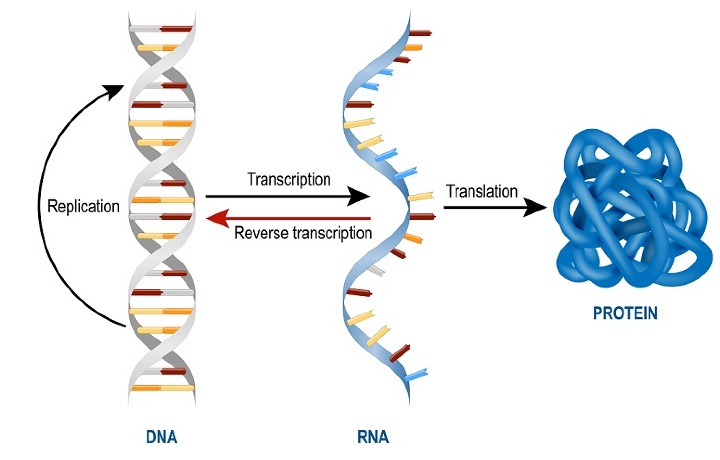
 Data Structure
Data Structure Networking
Networking RDBMS
RDBMS Operating System
Operating System Java
Java MS Excel
MS Excel iOS
iOS HTML
HTML CSS
CSS Android
Android Python
Python C Programming
C Programming C++
C++ C#
C# MongoDB
MongoDB MySQL
MySQL Javascript
Javascript PHP
PHP
- Selected Reading
- UPSC IAS Exams Notes
- Developer's Best Practices
- Questions and Answers
- Effective Resume Writing
- HR Interview Questions
- Computer Glossary
- Who is Who
What Are the Applications of Proteomics?
Introduction
Living organisms produce a variety of proteins for various functions. The type of protein to be produced depend on the function it has to perform, the need of the protein, and its interaction with other proteins. This entire set of proteins that are produced in a living system is called Proteome. The study of Proteome is referred to as Proteomics.
Proteomes are important as they are the building blocks of the living system that they form the structural and functional entity of cellular life. The study of proteomics is important as it provides a better understanding of the proteins, how they work, when they are synthesized in the body, and how they interact with other proteins.
Central Dogma of Molecular Biology
Protein synthesis is a complex process. There are three major processes by which genetic information is utilized by the cell. The central dogma of molecular biology shows the general pathway of information flow via replication, transcription, and translation.

Replication- It is the copying of parental DNA to form a daughter DNA molecule with an identical nucleotide sequence.
Transcription- It is the process by which parts of genetic information encoded in DNA are copied precisely into RNA.
Translation- The genetic message encoded in messenger RNA is translated on the ribosomes into a polypeptide with particular sequence of amino acids.
Proteomics plays an important role in the detection and quantitation of the proteins that are produced.
Methodologies in Proteomics
There are various methods that help in studying a protein completely. Generally, proteins can be detected by the following methods ?
Enzyme-Linked Immunosorbent Assay.
Electrophoresis.
Edman Degradation.
Mass Spectrometry.
Enzyme Linked Immunosorbent Assay (ELISA)
This method can be used to rapidly screen for and quantify an antigen in a sample. Proteins in the sample are well adsorbed to an inert surface. Here the inert surface used is a 96- well polystyrene plate whose surface is washed with a cheap source of non-specific protein like casein obtained from non-fat dry milk powder to block the proteins in the unoccupied wells.
The surface is treated with solution containing antibody against the protein in the well and then with secondary antibody with enzyme linked to it. The product formed is directly proportional to the sample of protein of interest in the sample.
Electrophoresis
This method is not used to purify proteins but can be used for their analysis. Its advantage is that proteins can be visualized as well as separated, permitting a researcher to estimate quickly the number of different proteins in a mixture or the degree of purity of a particular protein preparation. Generally, SDS PAGE is used to analyse proteins.
Edman Degradation
To sequence an entire polypeptide, a chemical method devised by Pehr Edman is usually employed. The Edman's degradation procedure labels and removes only the amino terminal residue from a peptide leaving all other peptide bonds intact.
The Edman degradation is carried out in a machine called sequenator, that mixes the reagents in proper proportions, separates the products, identifies them, and records the results. This method is extremely sensitive and complete amino acid sequence can be determined starting with only few micrograms of protein.
Mass Spectrometry
Mass spectrometry provides wealth of information for proteomics research, enzymology, and protein chemistry in general. The technique requires only miniscule amount of sample, so they can be readily applied to the small amounts of proteins that can be extracted from 2D electrophoresis.
He accurately measured molecular mass of a protein is one of the critical parameters in its identification. Once mass of protein is known mass spectrometry is a convenient and accurate method for detecting changes in mass due to the Prescence of bound cofactors, bound metal ions, etc.
Applications of Proteomics
Study Interaction of Proteins
The study of interaction between two proteins is referred to as interaction proteomics. The study of protein interaction helps us understand various signalling mechanisms, regulation of gene expression and also interaction of proteins with DNA.
Discovery of New Drugs
Studying proteins helps in the discovery of innovative drugs for the treatment of various diseases by deactivating the proteins produced by causative organisms. This branch of proteomics that deals with the discovery of innovative drugs against the target protein is referred to as Chemo proteomics.
Proteins as Biomarkers
Some techniques such as ELISA, Western blotting, etc. use secondary antibodies for the detection of antigens in a sample. So, proteins can be used as a potential biomarker in disease diagnosis. The branch of proteomics that deals with the study of the secreted proteins which can be used as biomarkers for the diagnosis of various diseases is called secretomics.
Genomic Studies
Proteomic studies along with genomic studies help in comparing different species by identifying post-translational modifications in the proteins produced. This branch of proteomics that studies genomics and proteomics together is called proteogenomics.
Conclusion
Proteomics is a new branch of molecular biology that deals with the study of proteins, their synthesis, their various functions, and their interactions. Proteomics has the potential to revolutionize the field of diagnostic medicine which deals with the study of proteins synthesized by various organisms.

